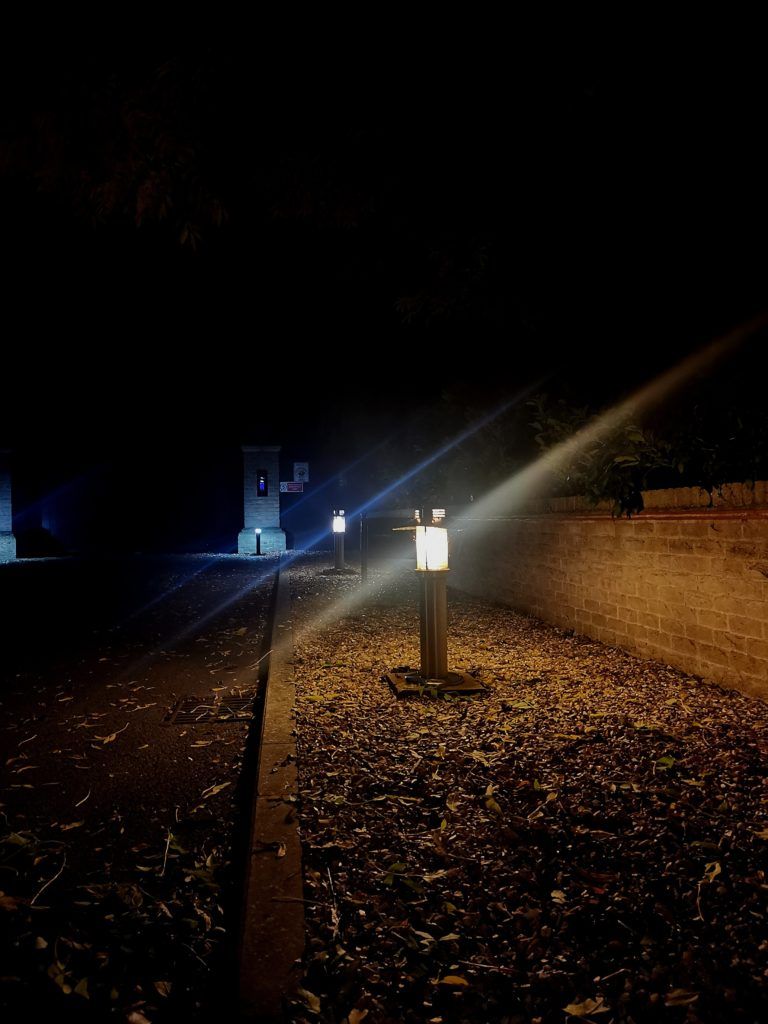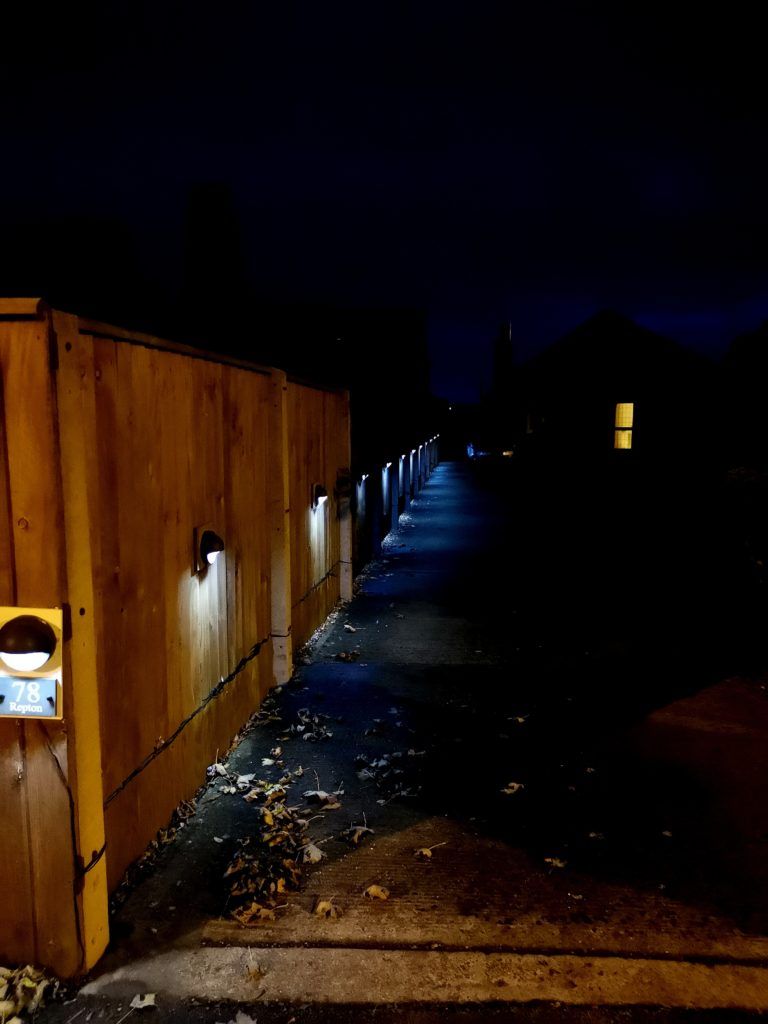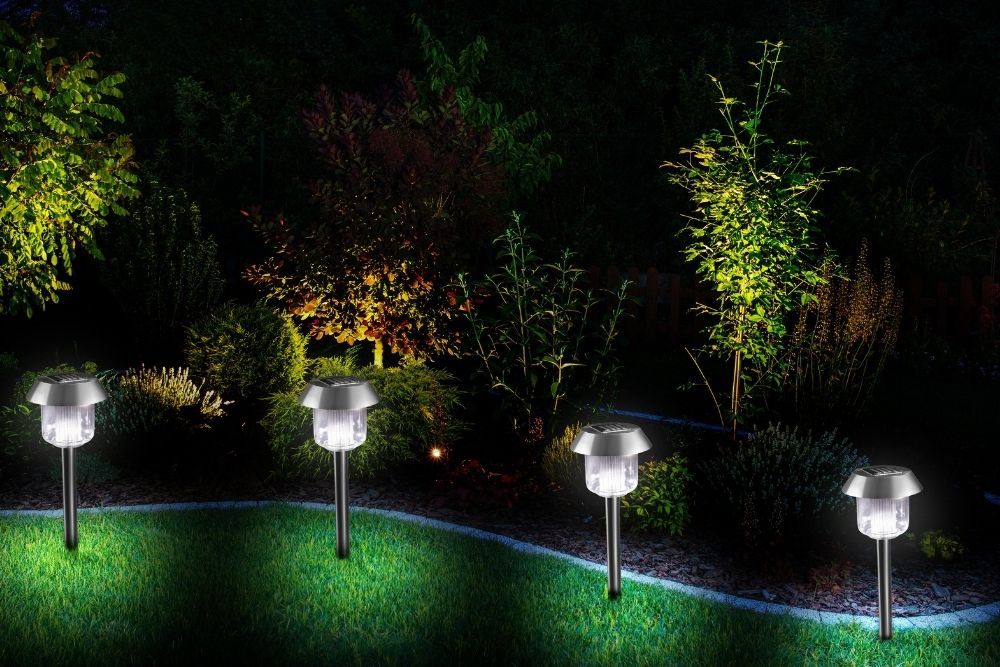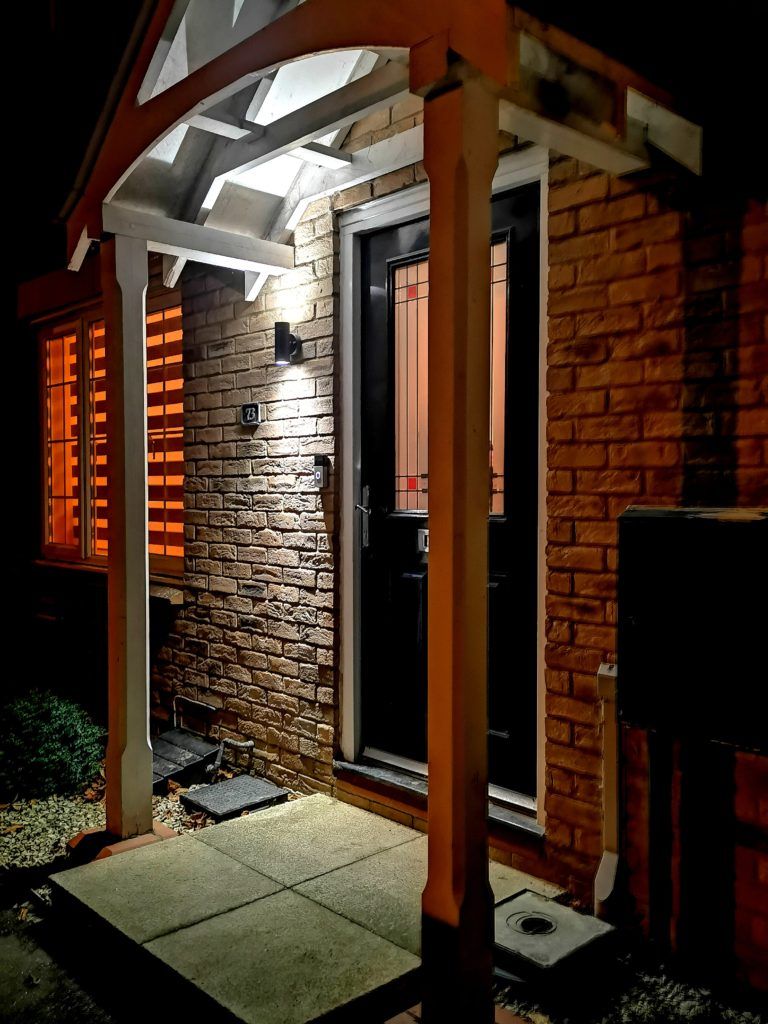
Garden lighting can make or break the ambience of your outdoor area. More and more of us are looking to utilise our outdoor spaces, and the primary way to do this is with lights.
It doesn’t take a lighting expert to give your outdoor space a glamorous glow. In this article, we take you on a tour of outdoor lighting, first looking at your lighting motivations, then exploring the different lighting effects.
To finish off, we’ll give you some top tips to avoid blazing blunders.
Why Are You Adding Lighting?
When considering new garden lighting designs, first ask yourself: why do I want it? Is it for functional purposes, allowing you to enjoy evening BBQs and quiet, blissful moments reading?
Are you looking to keep trespassers out with lighting specifically for security? Perhaps there are certain features of your garden that you love and wish to see day and night. Or maybe the aim is to create an atmosphere for hosting and general joy when looking out into your outdoor space in the dark.
Whatever your motivation, we’ve got you covered.
Functional Lighting
When you use lighting well, outside can become an extension of your indoor spaces. If you’re a non-stop BBQer and enjoy a party outdoors, functional lighting is essential to ensure safety and practicality.
Have a wander around your garden and pinpoint the areas where the level changes, like steps. For steps and uneven surfaces, try LED lighting. These automatically add drama to your garden and are easy peasy to install.
Identify the most-used paths and places where you’ll frequently find yourself and others sitting. These are the spaces you want to light up. You’ll reduce the risk of trips and falls and guarantee you can continue to cook on the barbie even after the sun goes down.
Security Lighting
eel at peace knowing you’re safe from intruders with security lighting. Security lighting can take the form of wall, post or path fittings and be mounted to ceilings or fences.
It may be worth investing in motion detector lighting to save yourself some pennies and avoid falling out with your neighbours!
Outdoor security lighting should be placed in precise locations to maximise their deterring effect. It’s typically recommended to go for wide-angle beams, with a minimum brightness of 700 lumens. Lights should be located near doors and entryways, such as your front door, side and garage entrances, and big windows.
Placing lighting on long driveways can also prevent unwanted intruders. If you’re thinking of setting up a camera security system, outdoor lighting ensures you’re able to see any trespassers, even when it’s pitch black.
Combine your security lights and cameras in a smart home security system; that way, you can turn your lights on even while you’re away.
Feature Lighting
Have you just purchased a stand-out garden feature that you can’t bear to leave in darkness? Feature lighting may be precisely what you’re looking for.
Water features are an ideal focus for outdoor lighting because the movement of the water creates reflections that have a pronounced effect on the whole outdoor space. Underwater spotlights are a perfect choice, as they make your water feature centre stage while keeping the fitting invisible.
Illuminating statues ensures that unique artwork is never missed. Spotlights work wonders for keeping your sculptures well-lit in pitch black. Place lights at the base of your statue to create a striking contrast between light and shadow and give it an ethereal glow.
If your garden features a magnificent tree that should be treasured even in the darkness, install well-lights 2-4 feet away from the trunk. You’re aiming for the light to gently touch one side of the trunk and the lower set of branches. If it’s a small tree with beautiful leaves, consider canopy lights.
Atmosphere Lighting
It’s true. All lighting creates an atmosphere. But if you’re after ambience specifically, there’s a particular way to achieve it.
Festoon lighting is an excellent example of creating an atmosphere through illumination. The big, bolshy bulbs that hang across your back garden provide a magical feel. To create an atmosphere with lighting, you want a gentle, warming glow. You don’t want bright white lights that flood your whole garden. Think orange lights that draw you in.
Pendant lighting is also a great choice. Just introduce pendant lights into your main social spaces, and watch your guests gravitate towards them.
If you’re an entertainer, the host with the most, you’ll likely want atmosphere lighting. It provides enough light so that you’re not talking into darkness, yet not too much as to ruin the nighttime feel.
How to Light a Garden: Lighting Effects
Shopping for outdoor lighting can quickly become overwhelming. All the different types of lights and bulbs are sure to send your head in a spin. Different lighting effects have distinct outcomes. Pinpointing a particular lighting effect will help you decide on your outdoor lighting design, fitting and bulb type.
When it comes to lighting effects, there are five main choices:
- Backlighting
- Spotlighting
- Path Lighting
- Uplighting
- Downlighting
Let’s explore each to understand them a little better.
Backlighting
Backlighting plays with shapes and silhouettes. It’s as simple as it sounds – you install lights behind specific garden features, illuminating the object from behind. This is great for sculptures and any object with an architectural design.
Structural flaws are highlighted with backlighting, so make sure you’re choosing objects with crisp, sharp lines. Choose an aesthetically pleasing wall as the backdrop because this will be illuminated too. Reclaimed brick, cladding, stone, or anything with an intricate texture or pattern will be ideal.
Spotlighting
Spotlighting systems do what they say on the tin. They light up a particular spot, much like the centre of a stage. These are powerful, narrow beams of light directed at one specific place of interest, such as a sculpture or statue.
You can use spotlights at the front of your house to light up your house number, architectural features, and fascinating plants. Take some time to identify the garden features you want to draw attention to, then add your spotlights.
Bear in mind that spotlights will light up the area of focus but make the surrounding areas seem even darker. Adding downlighting can be a way to counteract this.
Path Lighting
Lead the way with path lighting. Not only is this important for safety reasons, but it also provides leading lines that transport you across the space in a structured, controlled manner.
For path lighting, you’ll need low light fixtures that provide a burst of light across the path. Ensure you purchase lights with an upper shield, as this will focus the light on the walkway and stop it from projecting light upwards.
Just make sure the light fittings are out of the way; otherwise, they may cause falls, not prevent them!
Uplighting
Uplighting is where lights are positioned low to the ground or below an object. They project light upwards, drawing attention to all that’s above them.
Uplighting can be used for sculptures, statues, or beautiful trees and shrubs. Place lights at the bottom of a pergola or gazebo to bring your guests’ attention to your central socialising spot.
LEDs and well-lights are two of the best options for uplighting.
Moonlighting
The next time you pass big buildings, walls, and fences in the dark, take a look at their lighting. More often than not, they’ll use moonlighting (also called “downlighting”) to create a dramatic effect.
Moonlighting is simply the opposite of uplighting; the lights are up high, illuminating objects below. This lighting effect is theatrical when placed in well-established trees, as it lights up the tree’s many branches and extensive foliage.
But moonlighting isn’t just for trees. You can use it to draw attention to statues and plants from above. This effect provides a unique experience and deters potential intruders.
Bullet light fixtures make great downlights. Place them above head height for maximum effect.
Lighting Top Tips
Don’t Overdo It
With outside lighting, you’re working with light and shadow. You don’t want to floodlight your garden, so you’re blinded every time you look out your window. Choosing what to highlight and what to keep in darkness is fundamental for successful outdoor lighting design.
If there’s a part of your garden you can’t stand, keep it in darkness! That’s the beauty of outdoor lighting.
Match Your Colours
I’m sure you’re aware that bulbs can emit various colours. Mismatched light colours look confused and lack the desired sleekness of an effective lighting design.
If you prefer the bright, white lights of powerful LEDs, ensure you’re using this colour throughout. If the warmer, orange glow is more to your taste, choose those! But keep it consistent.
What do we suggest? Stick with warmer colours. These will provide an awe-inspiring atmosphere while lighting the way. White lights may look stylish, but they can quickly go from contemporary to clinical-looking and cold.
Hide the Fitting
For maximum effect, hide the fitting. That way, all you can see is the light. This increases the drama and awe because the light appears to be floating in your outdoor space. Choose to use well-lights that sit nicely in the ground or fixtures hidden by hedges, gutters, and plants.
This can’t always be achieved, but try where you can.
When To Call The Expert
If you’ve decided on solar or battery-powered lights, chances are you won’t need to call in an expert. But if you’re looking for an extensive lighting system with a high-quality finish, you’re better off getting a professional.
We’d recommend an expert for wired, high voltage installations. Don’t risk your health and safety to save yourself some pennies.
Let There Be Light!
Hopefully, by now, you’ve figured out your motivation for your light design. If you’re after a practical outdoor space, choose functional lighting. If your primary concern is protecting yourself and your family, security lighting is a priority. Feature and atmosphere lighting are the ultimate choices to showcase your garden in all its glory.
Picking the position of your lights is part and parcel of an exquisite lighting system. So where are they going to go? Will you project your lights up, down, across, behind, or in one particular spot? The world is your oyster.
Just don’t overdo it, keep your colour temperature consistent, and hide the fitting. If you’re in over your head, call in the experts.







